Agricultural Products Lists
-
Direct seeding technique of double-low rapeseed with less no-tillage
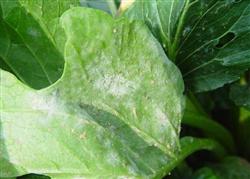
The control of rape powdery mildew is a prerequisite for rape to obtain high yield and good quality, while the final flowering stage and the middle and late stage of autumn sowing rape are in high temperature and inter-plant shade from March to April, the occurrence of powdery mildew is more common, which greatly reduces the 1000-grain weight of rape and affects the yield. therefore, the prevention and control of rape powdery mildew is very important. 1. Danger.
2018-09-13 -
Control techniques of rapeseed virus disease
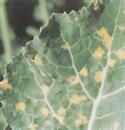
Virus disease is one of the main diseases of rapeseed, the affected plants affect the yield of about 20%, serious as high as more than 70%, generally in the year of less rain or the surrounding areas where vegetables are often planted, it is more susceptible to disease, the prevention and control of rape virus disease must take comprehensive control technology. First of all, disease-resistant varieties should be selected, the second is timely control of aphids, and the third.
2018-09-13 -
Use rape without a trace before sowing.
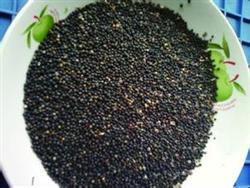
20% grams of water-free agent is a contact-killing herbicide. Spraying Ke after no-tillage direct seeding or transplanting rape during harvest and stubble of rice and cotton can improve soil fertility, improve soil structure, increase permeability, preserve fertilizer and water, and save labor and cost compared with ploughing and planting rape, especially in rural areas.
2018-09-13 -
Occurrence characteristics and control methods of rape weeds
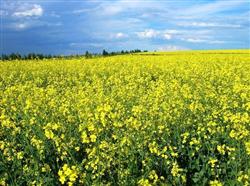
The absorption of nitrogen, phosphorus and potassium by rape is that nitrogen is greater than potassium and potassium is greater than phosphorus. For each 1000 kg rape production, nitrogen needs to absorb 2.76 kg, phosphorus 0.33 kg and potassium 2.06 kg. The ratio of N, P and K uptake was 8.38∶1∶6.24. A deficiency of trace element boron produces symptoms of boron deficiency. A rape plant...
2018-09-13 -
How to prevent rape Fertilizer damage
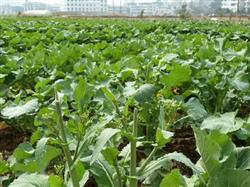
1. To reform the fertilization method in accordance with the principle of practicality, practicality and effectiveness, the compost and mature organic fertilizer made by retting with enzyme bacteria are recommended, and the method of layered application or deep application of the whole layer is adopted. According to the planned stubble and the total amount of fertilizer in the current year, it can be applied at one time during deep ploughing, and the formula fertilization technology can be adopted to master the three elements of nitrogen, phosphorus and potassium.
2018-09-13 -
Symptomatic control of rape stiff seedlings
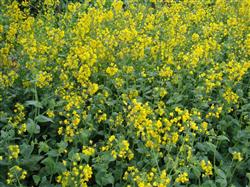
In the early stage of field growth after transplanting slow seedlings, rigid seedlings sometimes appeared, such as reddish leaves and yellow leaves, leaf center curls, slow growth or cessation of growth, poor growth and so on. Targeted measures should be taken to prevent and control rape stiff seedlings on the basis of investigating the causes of stiff seedlings. The drought of stiff seedlings caused by drought or waterlogging not only leads to.
2018-09-13 -
How to fertilize rape in winter
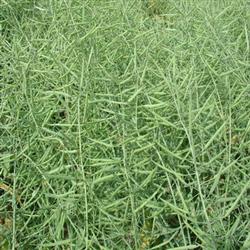
Rape is "flowering but unfruitful", also known as shrinking unfruitful. That is, from the onset of the plant to maturity, it still blossoms one after another, but it can not bear fruit normally. It is a physiological disease caused by planting rape in boron-deficient soil, which mainly occurs in Brassica napus varieties, but it has also been found in Brassica napus in recent years. After the attack.
2018-09-13 -
Beware of virus disease in rape seedlings
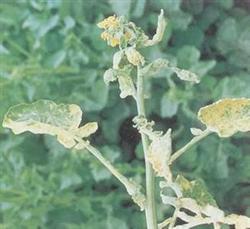
The characteristics of rape seedling virus disease in seedling bed are as follows: 1. During soil preparation, when applying farm manure such as pig manure, cow manure, chicken manure and so on, rape seedlings do not suffer from the disease. 2. No farm manure was applied, but only ammonium bicarbonate was applied to the seedling bed, the disease of rape seedlings was serious. 3, the same variety, the same amount of fertilizer, fertility.
2018-09-13 -
Effect of phosphorus Nutrition on double-low rape and its Application period
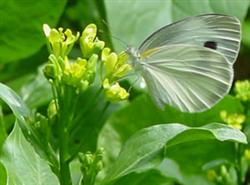
The scientific name of rape pink butterfly Artogeia (Pieris) rapae (Linnaeus) is Lepidoptera, Pteropteridae. Synonym Artogeiarapae (L.). Alias White Butterfly, White Butterfly. The larvae are called cabbage insects. Distributed all over the country. Host rape, cabbage, cauliflower, cabbage, radish and other cruciferous vegetables.
2018-09-13 -
Classification standard and control method of rice blast
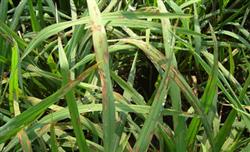
Grading standard leaf plague: 1 sporadic occurrence, careful investigation can see the disease 2 slightly more, the disease leaves concentrated in the lower 3 widespread, the disease leaves concentrated in the middle and lower 4 more serious, the disease leaves concentrated in the middle and upper, a small amount of pond 5 serious, there are obvious pond...
2018-09-13 -
Occurrence and control of rice blast and rice planthopper
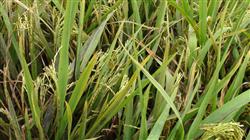
First, the occurrence of rice blast: Rice leaf blast has appeared in Helan, Qingtongxia and other places. The initial period is June 13, about 10 days earlier than last year. Especially after the rainfall on July 7 and 12, the humidity in the field is relatively high, which is very beneficial to the development of leaf blast. The average rate of disease fields in the recent general survey of Qingtongxia is 16.7%.
2018-09-13 -
Occurrence characteristics and control techniques of rice false smut
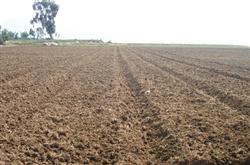
1. Occurrence characteristics of rice false smut disease only occurs in panicle, generally from flowering to milk ripening of rice. The infected grain grows in glume and forms rice false smut with a diameter of about 1 cm instead of rice grain. The optimum temperature for germination and development of Ustilaginoidea virens was 25~30℃, 34℃ or 12 ℃.
2018-09-13 -
Characteristics and control strategies of rice planthopper

Baohe Township, located in the southwest of Jinghe County, is a hilly area. The township has 9144 mu of arable land and 7813 mu of paddy field, which is a typical agricultural township in mountainous areas. Rice planthopper (Nilaparvata lugens) is a common pest that seriously damages rice in our village, causing losses to varying degrees every year. Especially in the past 2 years, due to the influence of climate and a series of factors, rice production.
2018-09-13 -
Rice heading difficulty can be sprayed with gibberellin
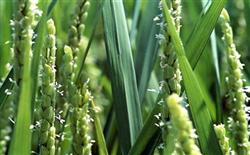
It is difficult for rice to heading, or the phenomenon of neck wrapping appears. Because the rice grains wrapped in the leaf sheath can not be pollinated and fertilized in time, they will generally become empty grains, which has a great impact on the yield. There are many reasons for this phenomenon, some of which are more serious in terms of neck wrapping, especially in adverse environmental conditions.
2018-09-13 -
Analysis on the causes of rice bacterial blight and its control techniques
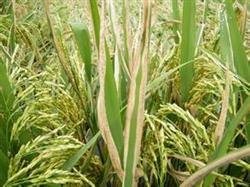
The pathogen of rice bacterial blight is Xanthomonas oryzae, bacteria, Xanthomonas genus. Bacterial blight is one of the main diseases of rice. Once it occurs, the yield can be reduced by 10% in general and 50-60% in serious cases. Therefore, it is very important to strengthen the control of bacterial blight. 1. Causes of disease 1.1 Incidence and climatic conditions...
2018-09-13 -
What is the cause of Tillering death in Rice and Wheat
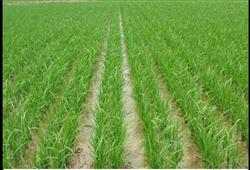
Q: I am from Sihong County. Here, many of the tillers of wheat do not grow and eventually shrink and die, and so does rice. In addition, there are several grains missing at the base of the wheat ear, or the branchlets at the base of the rice ear do not bear particles as if they had been rolled. What is the reason for this? Answer: a large number of tillers died in the middle and later period of wheat and rice growth.
2018-09-13 -
Strengthening the Prevention and Control of Diseases and insect pests in the Middle and later stage of Rice
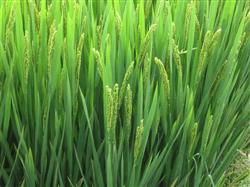
At present, it is the booting stage of rice. in order to conscientiously do a good job in the prevention and control of diseases and insect pests in the middle and later stages of rice and ensure the increase of rice production and income this year, Shuangfengqiao Street has recently taken effective measures to strengthen the prevention and control of diseases and insect pests in the middle and later stages of rice. Because last winter this spring is a warm winter year, rice stem borer, rice leaf roller, rice planthopper.
2018-09-13 -
Rice brown planthopper
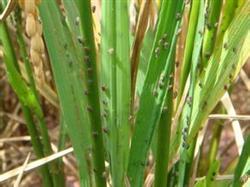
Rice brown planthopper is also known as brown planthopper, commonly known as Ascaris lumbricoides, soft shell Ascaris, Ascaris, midges. Scientific name Nilaparvatalugens (Stdl) Homoptera, Homoptera. Brown planthopper (Nilaparvata lugens) is one of the main rice pests in China.
2018-09-13 -
Key points of Prevention and Control of main Diseases in Middle and late stage of Rice
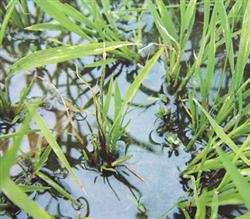
Symptoms of damage: symptoms appeared in the later stage of seedling field, and the symptoms were significant in the peak tillering stage. The diseased plant is dwarf, the leaf color is light green; the yellow-white dot on the leaf is round or oval, often connected into a linear shape; after booting, the diseased plant is significantly dwarfed, and the plant height is less than 1/2 of the healthy plant. The leaves are short and thick, and the heart leaves are yellow and white, sometimes bent or twisted.
2018-09-13 -
Symptoms of Fertilizer deficiency and excessive nutrients in Rice
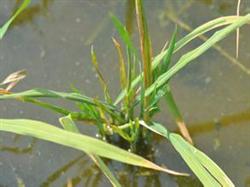
First, the occurrence situation of rice black-streaked dwarf disease was first found in late rice in Guangdong Province in 2001. In recent years, the area of rice in Vietnam and southern China has expanded rapidly, with 9 provinces such as Guangxi, Guangdong and Hunan in 2009, with an area of 5 million mu, which is expected to exceed 10 million mu in 2010.
2018-09-13
